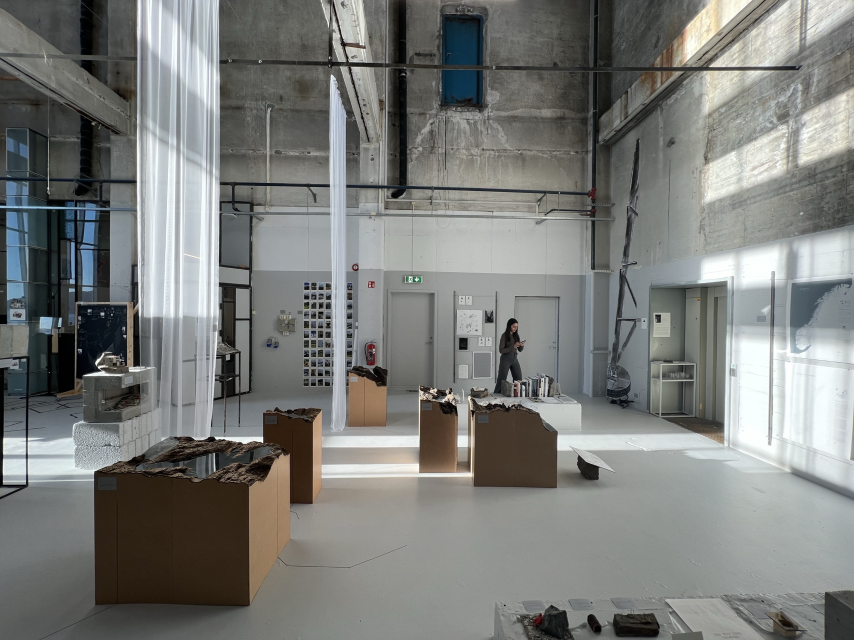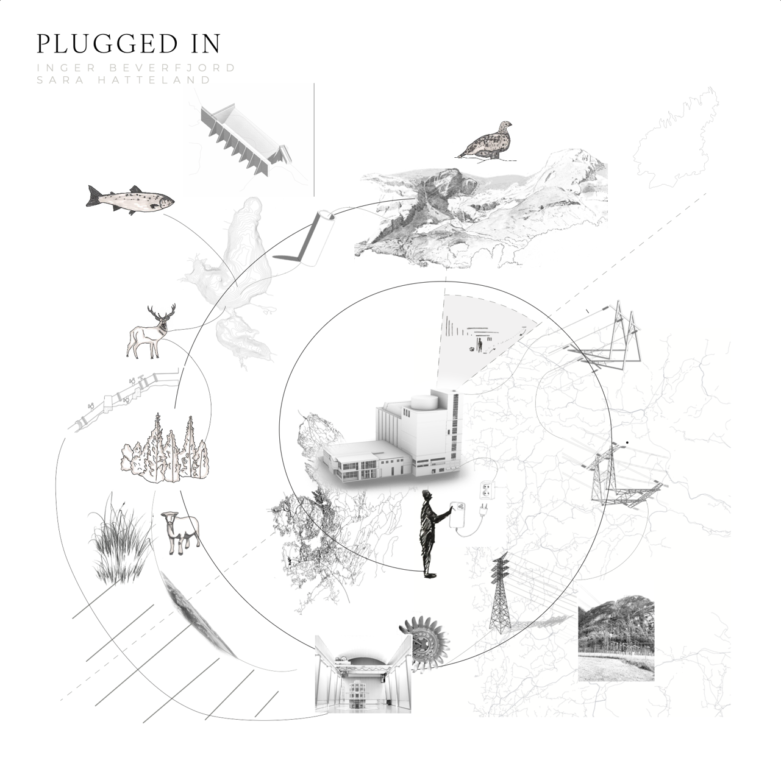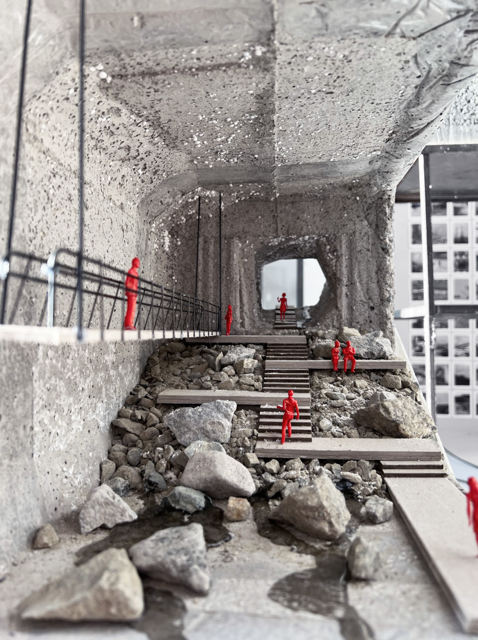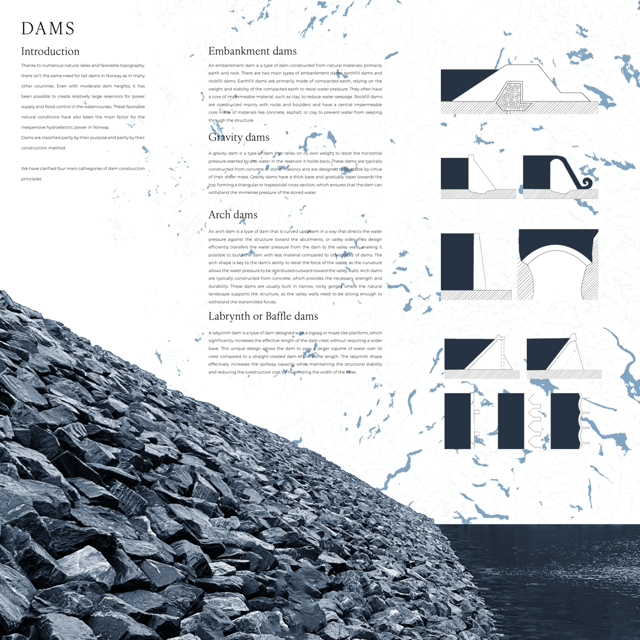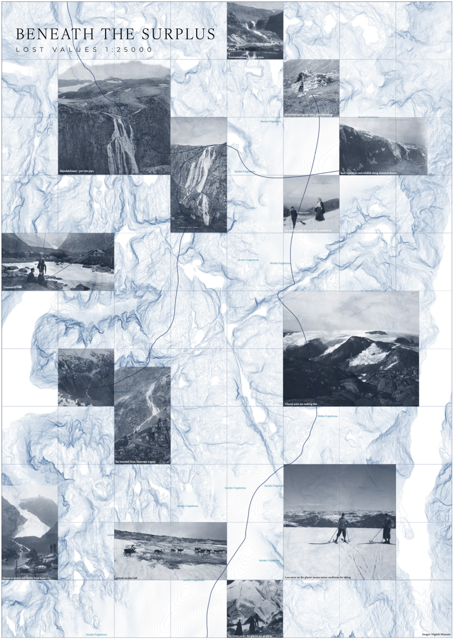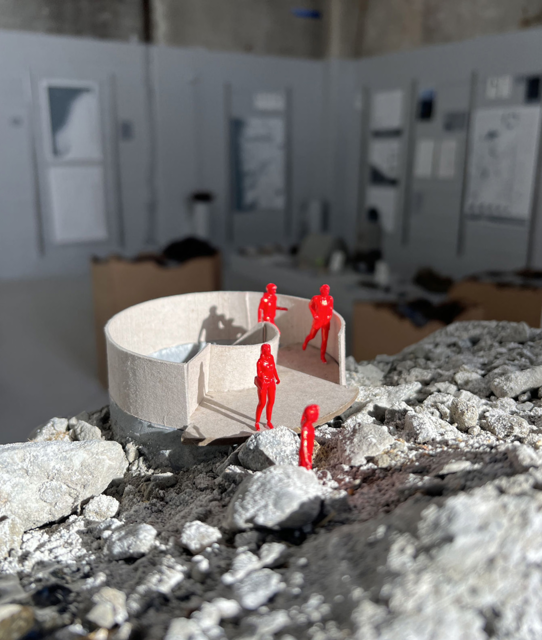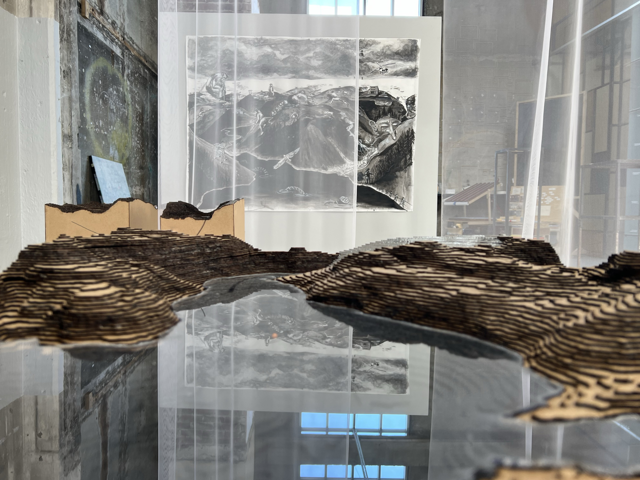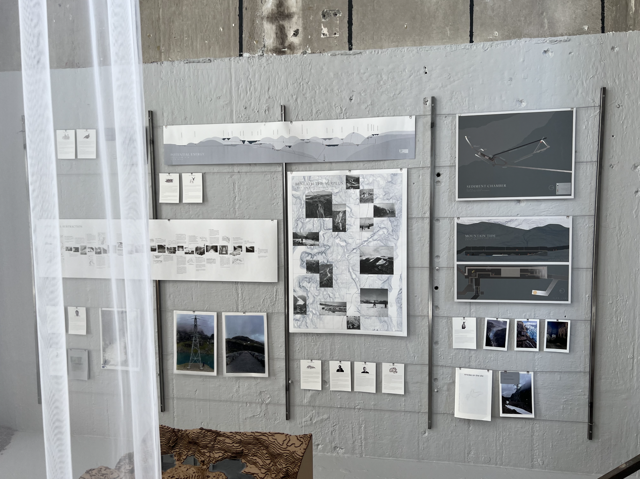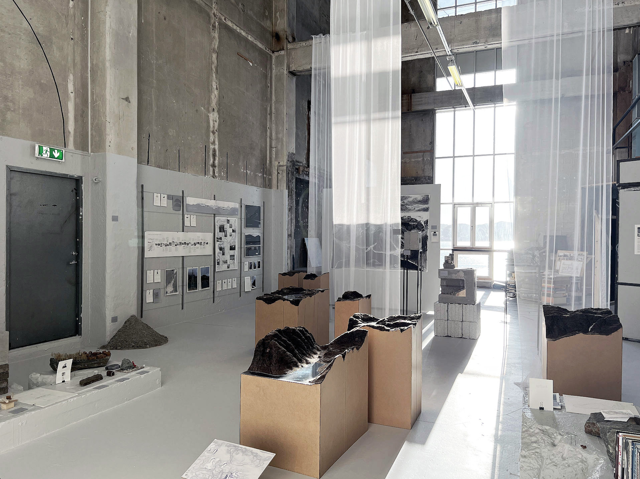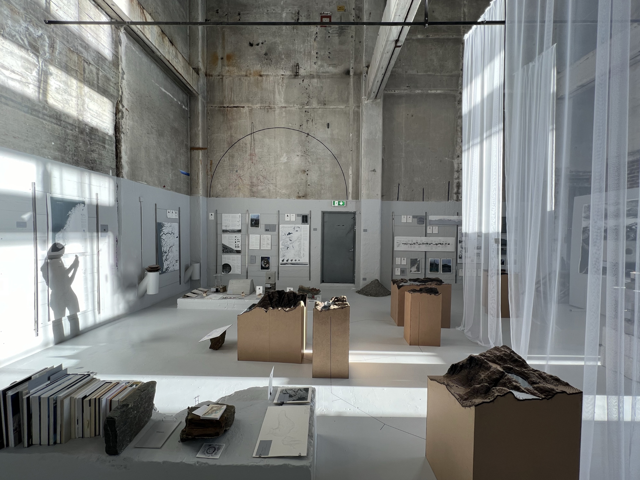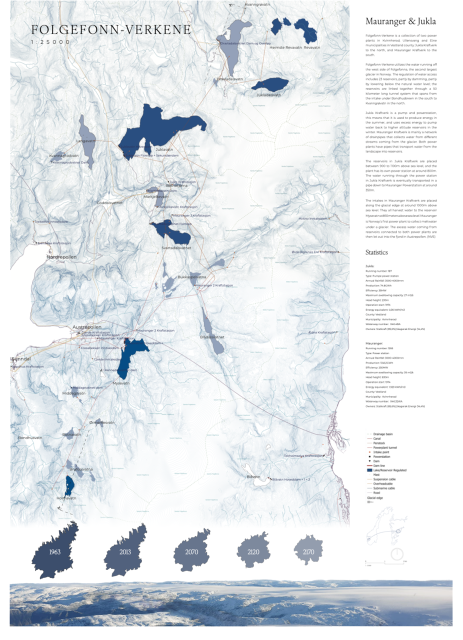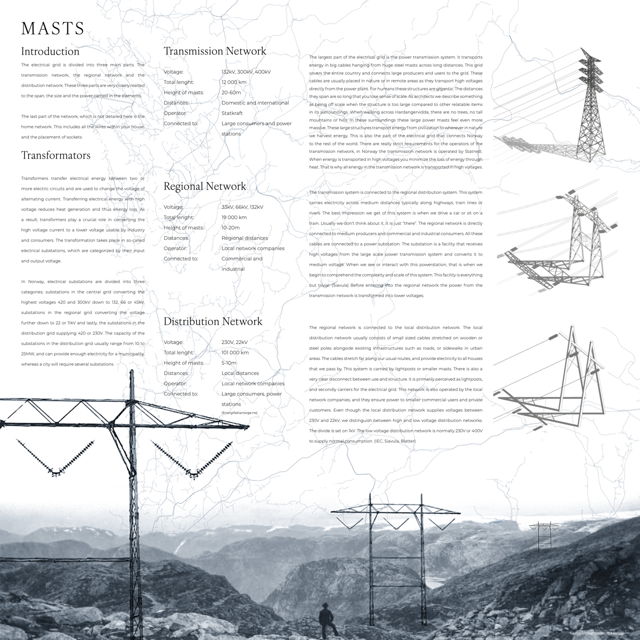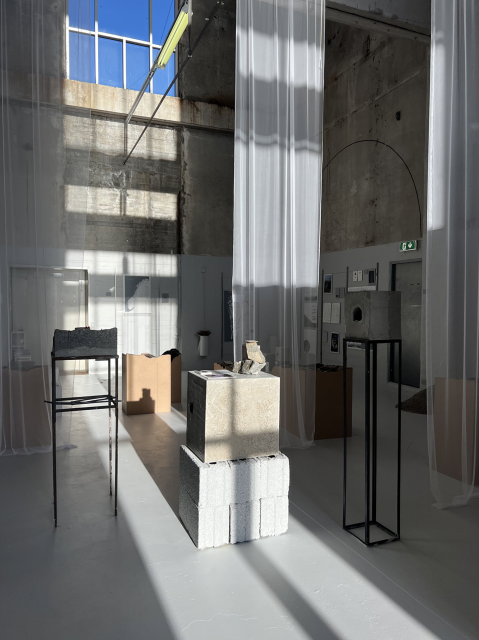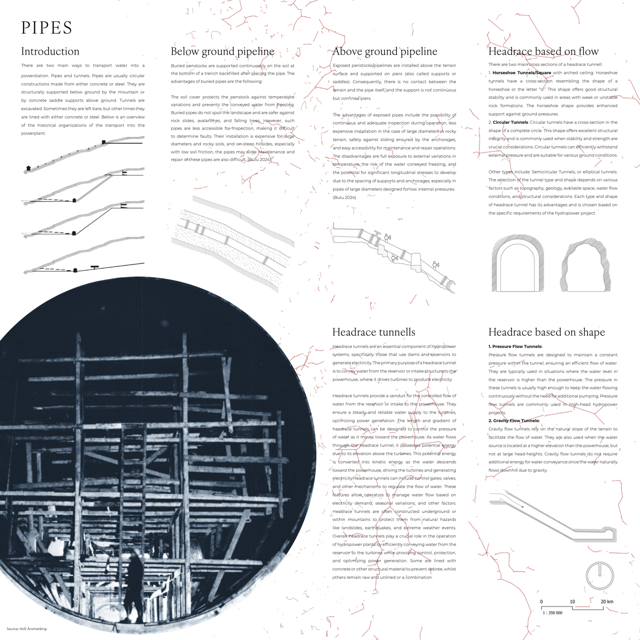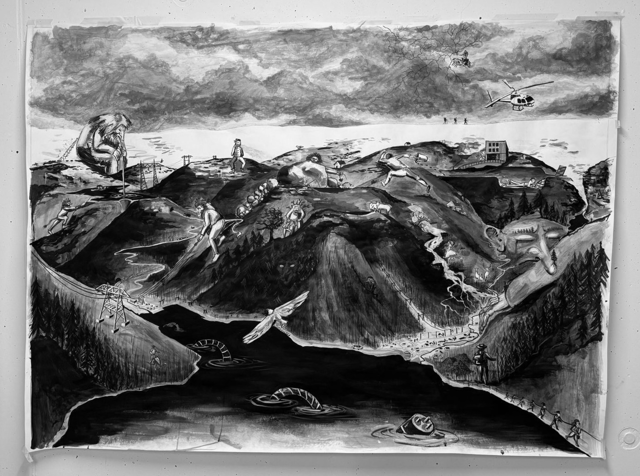The infrastructure connected to the production and transportation of renewable energy stretches around the whole world and provides us with heat, light and electricity. It is very complex and intricate which makes it difficult to understand. One of the key skills architects have when working with large complex systems is our understanding of scale. That is why we chose to investigate the concept of scale in more depth. We looked at what multidisciplinary theorists write about the topic, and from this it became clear that most of the voices we listened to could be divided into two categories.
That is why we divided our research into our own two definitions scale:
The first being the representational scale: It refers to the objective understanding of an object in relation to another, and how these can be represented through the use of different media. This is the common scale we practice in every architecture drawing 1:50, 1:200, 1:1000. It is about visualizing, designing, communicating and understanding. It is about dimension, size and proportion. The representational scale is about showing our surroundings by making a careful selection, with a specified resolution with the intention of simplifying our complex three-dimensional world.
The second concept is the experiential scale. It refers to the subjective understanding and perception of one’s surroundings in relation to their own body and sensory experiences. It encompasses how individuals interpret and experience the size, scope, and dimensions of the world around them. In our definition experiential scale considers factors such as culture, society, velocity, movement and time. Essentially, it involves how we sense and perceive the scale of our environment and our place within it, including both tangible and intangible elements.
Our diploma project contains an investigation into the vast case of hydropower through these two concepts of scale. In the exhibition a range of reservoirs are represented by seven large fragment models that form the core of the room and the core of the system. The models are connected to three large curtains showing the glacial presence on the site. This landscape is surrounded by a scaled version of the transmission network transporting the ideas, the voices, and the research found in our diploma. We try to show this system as architects, focusing on at least one visualization that deals with the representational and experiential scale. We were initially hoping to solve a concrete problem, but the more we learned about this system and scale, the more questions we got.
The questions we have asked throughout our research are not necessarily answered, but we believe raising them is meaningful in itself. One of the things that became visible to us after doing this project is that we as architects actually deal quite regularly with both our concepts of scale. We draw the system in plan to understand it, and then we draw the section to experience the human in it. Architects try to put words to this in different ways, as have we in this diploma. It may sound general to conclude that “oh, great, we are already doing all of this”. However, infrastructure projects are dominated by engineers and many other technical professions. We believe that the architect’s understanding of scale has the potential to contribute to projects and discussions regarding infrastructure and the climate crisis.
